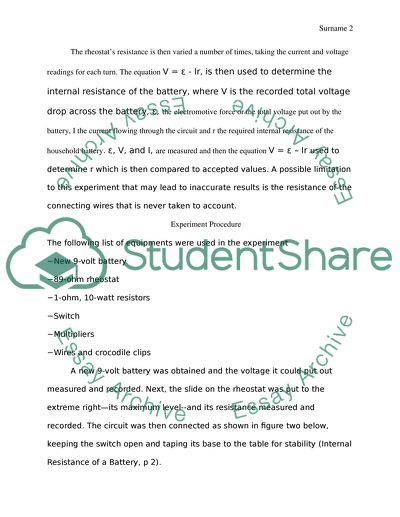Cite this document
(Internal Resistance of a Battery Lab Report Example | Topics and Well Written Essays - 250 words, n.d.)
Internal Resistance of a Battery Lab Report Example | Topics and Well Written Essays - 250 words. Retrieved from https://studentshare.org/formal-science-physical-science/1588722-internal-resistance-of-a-battery
Internal Resistance of a Battery Lab Report Example | Topics and Well Written Essays - 250 words. Retrieved from https://studentshare.org/formal-science-physical-science/1588722-internal-resistance-of-a-battery
(Internal Resistance of a Battery Lab Report Example | Topics and Well Written Essays - 250 Words)
Internal Resistance of a Battery Lab Report Example | Topics and Well Written Essays - 250 Words. https://studentshare.org/formal-science-physical-science/1588722-internal-resistance-of-a-battery.
Internal Resistance of a Battery Lab Report Example | Topics and Well Written Essays - 250 Words. https://studentshare.org/formal-science-physical-science/1588722-internal-resistance-of-a-battery.
“Internal Resistance of a Battery Lab Report Example | Topics and Well Written Essays - 250 Words”, n.d. https://studentshare.org/formal-science-physical-science/1588722-internal-resistance-of-a-battery.


